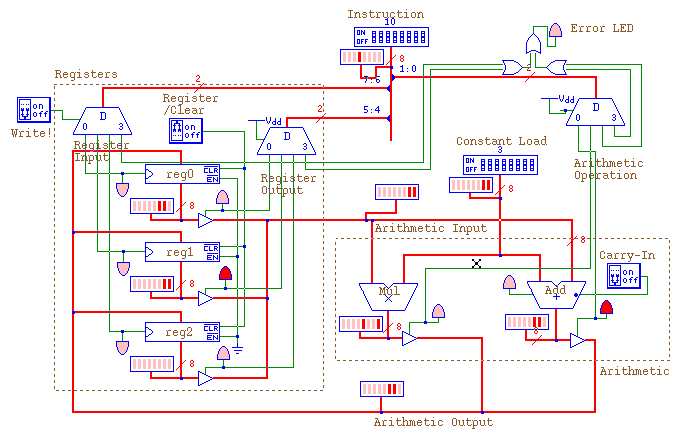
The contents of that address appear on OUT after a little while. Send the desired address to the ADRS input. Select the read operation, by setting WR = 0.

Slide 8 Random Access Memory8 Reading RAM To read from this RAM, the controlling circuit must: Enable the chip by ensuring CS = 1. With a data size of one byte, the result is apparently a 4GB memory! The operating system uses hard disk space as a substitute for real memory. This works out to 2 32, or about four billion, different possible addresses. Most systems allow up to 32-bit addresses. Many operating systems implement virtual memory, which makes the memory seem larger than it really is. Digital cameras and MP3 players can have 32MB or more of storage. Slide 7 Random Access Memory7 Typical memory sizes Some typical memory capacities: PCs usually come with 128-256MB RAM. In this class, well only concern ourselves with the base 2 units. To confuse you, RAM size is measured in base 2 units, while hard drive size is measured in base 10 units. The 2 28 -bit memory on the previous page translates into: 2 28 bits / 8 bits per byte = 2 25 bytes With the abbreviations below, this is equivalent to 32 megabytes. 2 k x n memory ADRSOUT DATA CS WR k n n Slide 6 Random Access Memory6 Size matters! Memory sizes are usually specified in numbers of bytes (8 bits). The total storage capacity is 2 24 x 16 = 2 28 bits. For example, a 2 24 x 16 RAM contains 2 24 = 16M words, each 16 bits long.

There are k address lines, which can specify one of 2 k addresses. 2 k x n memory ADRSOUT DATA CS WR k n n Slide 5 Random Access Memory5 Memory sizes We refer to this as a 2 k x n memory. This interface makes it easy to combine RAMs together, as well see.

DATA is the n-bit value to save in memory. OUT will be the n-bit value stored at ADRS. To read from memory, WR should be set to 0. WR selects between reading from or writing to the memory. ADRS specifies the address or location to read from or write to. A Chip Select, CS, enables or disables the RAM. Slide 4 Random Access Memory4 Block diagram of RAM This block diagram introduces the main interface to RAM. If youve worked with pointers in C or C++, then youve already worked with memory addresses. You can read or modify the data at any given memory address, just like you can read or modify the contents of an array at any given index. Well refine the memory properties as follows: A RAM should be able to: - Store many words, one per address - Read the word that was saved at a particular address - Change the word thats saved at a particular address Slide 3 Random Access Memor圓 Picture of memory You can think of computer memory as being one big array of data. Each value can be a multiple-bit word (e.g., 32 bits). An address will specify which memory value were interested in. A RAM is similar, except that it can store many values. You should be able to change the stored value. You should be able to read the value that was saved. Remember the basic capabilities of a memory: It should be able to store a value. This is the last piece we need to put together a computer! Slide 2 Random Access Memory2 Introduction to RAM Random-access memory, or RAM, provides large quantities of temporary storage in a computer system. How you can implement static RAM chips hierarchically. Today well see: The basic interface to memory. Random access memory, or RAM, allows us to store even larger amounts of data. A register can store a single word, typically 32-64 bits. A flip-flop can store one bit of information. Random Access Memory1 Random access memory Sequential circuits all depend upon the presence of memory.


 0 kommentar(er)
0 kommentar(er)
